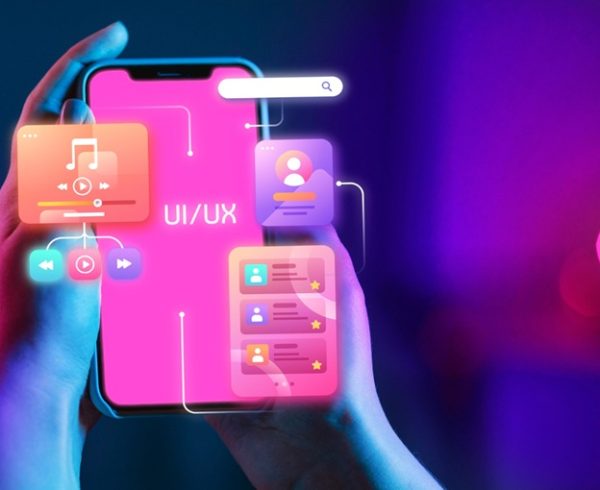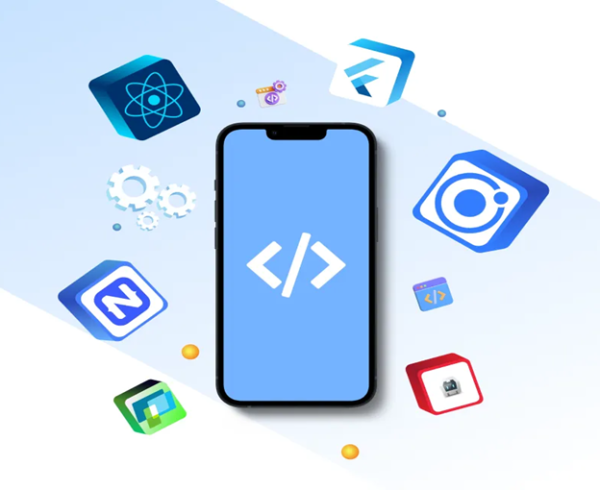In a world where consumers are constantly bombarded with digital content, conventional marketing strategies are no longer enough to capture attention. Audiences demand relevance, value, and a sense of personal connection. This is where hyper-personalization marketing steps in—a data-driven approach that uses real-time behavioral insights to create highly customized experiences across multiple touchpoints.
Hyper-personalization marketing goes beyond using a customer’s name in an email. It involves using artificial intelligence (AI), machine learning, and real-time data analytics to deliver content, product recommendations, and services tailored specifically to an individual’s needs, preferences, and behaviors. It is the evolution of personalization in marketing, offering brands a powerful way to deepen engagement, improve conversions, and build long-term loyalty.
Hyper-personalization marketing technique is especially valuable in the current digital economy, where consumer expectations are continuously rising. People want instant solutions, seamless digital experiences, and marketing messages that feel tailored just for them. Hyper-personalization enables brands to respond to these expectations in real time, making interactions feel more human and meaningful, even when powered by technology.
Unlike traditional marketing strategies that rely on demographic data and broad segments, hyper-personalization uses a mix of browsing history, purchase behavior, social media interactions, and contextual triggers to design personalized journeys. These insights help brands not only predict what customers want but also proactively deliver value at the right moment.
As brands compete for attention, loyalty, and conversion in saturated markets, hyper-personalization is becoming a game-changer. From e-commerce platforms to banks, businesses across sectors are adopting this approach to enhance user experience, optimize marketing ROI, and stay ahead of the curve.
What Is Hyper-Personalization Marketing and How Does It Work
To understand hyper-personalization meaning, it’s important to recognize how it differs from general personalization. While traditional personalization uses static customer data like name, location, and gender to tailor content, hyper-personalization leverages dynamic real-time data to adapt marketing messages based on behavior, context, and intent.
Hyper-personalization marketing uses data collected from various digital touchpoints—such as websites, mobile apps, emails, chatbots, and IoT devices—to understand the customer’s journey. These insights are then processed using AI to predict future behavior and deliver messages accordingly.
For instance, if a customer views a product multiple times but doesn’t make a purchase, the brand might send a personalized discount offer or display a relevant ad featuring that product along with similar recommendations. The goal is to act on data while the customer is still actively engaged.
The data sources used in hyper-personalization include clickstream data, device usage, purchase patterns, time spent on a page, cart abandonment behavior, and more. These data points are analyzed in real time to create experiences that feel like they’re designed for one person only.
A critical aspect of hyper-personalization marketing strategy is its ability to automate decision-making. With the help of predictive analytics, marketers can trigger the next best action, such as sending a push notification, altering website content, or recommending a related product, based on a customer’s recent interactions.
This kind of marketing builds trust and satisfaction because customers feel understood. When brands consistently deliver the right message at the right time, customer loyalty naturally follows.
The Key Benefits and Capabilities of Hyper-personalization Marketing
One of the key benefits of hyper-personalization marketing is enhanced customer engagement. Because the messages are more relevant and timely, users are more likely to interact with the content, be it a product recommendation, a personalized blog, or an email offer.
Hyper-personalization also leads to higher conversion rates. By targeting customers with offers or messages that align with their current stage in the buyer journey, businesses can reduce friction and shorten the decision-making process. Whether it’s a cart recovery campaign or a customized upsell, hyper-personalization makes it easier for customers to say yes.
Another major benefit is customer retention. When customers feel that a brand understands their needs, they’re more likely to stay loyal and recommend it to others.
Marketers also benefit from more efficient use of resources. Instead of blasting campaigns to large, unsegmented lists, hyper-personalized strategies focus on high-intent individuals, improving ROI while reducing marketing waste.
Data accuracy is also improved. Because hyper-personalization relies on real-time insights, marketers can quickly identify patterns and adapt their strategies accordingly.
Incorporating hyper-personalization examples into campaigns, like personalized homepage banners, AI-driven product suggestions, and behavior-triggered messages, has shown measurable results across industries. From improved engagement metrics to increased average order value, the evidence speaks clearly about its effectiveness.
FAQs:
What is the difference between email segmentation and personalization?
Email segmentation means dividing your email list into smaller groups based on shared traits like age, location, or interests. Personalization is using specific details like a person’s name or past purchases in the email. Segmentation helps you send the right message to the right group; personalization makes each message feel more personal.
What is the difference between personalization and hyperpersonalization?
Personalization uses basic customer data, like name or purchase history, to tailor messages. Hyper-personalization goes further by using real-time data, behavior, and preferences to create even more relevant and specific content or offers for each individual.
What is customer segmentation vs. personalization?
Customer segmentation groups customers based on common features (like demographics or behavior), while personalization customizes messages or experiences for individual customers. Segmentation targets a group; personalization focuses on the individual.
What is the difference between clustering and segmentation?
Segmentation is the general process of dividing a market into groups. Clustering is a method used to find these groups based on data patterns without knowing the groups in advance. So, clustering is one way to do segmentation, often using AI or machine learning.
What is an example of clustering in marketing?
An example of clustering in marketing is analyzing customer data to find natural groups—like budget shoppers, loyal customers, and trend followers—without knowing these groups beforehand. Marketers can then create targeted campaigns for each cluster.
Hyper-Personalization in E-commerce: Enhancing the Buying Journey
E-commerce is one of the sectors where hyper-personalization has had the most impact. In a digital store where physical interaction is absent, brands must rely on digital cues to understand and serve their customers. Hyper-personalization in ecommerce enables them to do just that.
Online retailers use browsing history, wish lists, cart behavior, purchase frequency, and even device type to build dynamic experiences for each shopper. For instance, when a returning customer logs in, they might see a homepage tailored to their recent interests, complete with style suggestions, size preferences, and ongoing offers.
Email marketing also becomes more powerful. Instead of sending a generic weekly newsletter, an e-commerce brand can send a customized email with product recommendations based on the customer’s latest searches or abandoned cart items. If a user typically shops at night, the email can be scheduled accordingly for optimal impact.
Personalized chatbots and voice assistants are another growing feature. These tools guide customers through their buying journey by offering real-time assistance, tracking orders, and even suggesting add-ons based on prior purchases.
Hyper-personalization in e-commerce also helps reduce bounce rates. When shoppers land on a product page that aligns with their taste and intent, they are more likely to continue browsing, exploring, and purchasing.
Product reviews, social proof, and urgency messages can also be personalized. For example, a customer interested in electronics might be shown reviews from similar tech-savvy buyers, creating a sense of trust and relevance.
This level of personalization transforms the ecommerce experience from a transaction into a conversation—one that feels customized, engaging, and rewarding.
How Banking and Financial Services Use Hyper-Personalization
The rise of hyper-personalization in banking shows how even highly regulated industries are adopting this approach to improve user experience and engagement. Financial institutions have vast amounts of data—account activity, spending patterns, transaction history—that can be used to create highly tailored experiences for customers.
For example, banks can analyze a customer’s income and spending behavior to offer savings tips or relevant financial products, such as low-interest loans or investment options. Notifications about account activity, payment reminders, or fraud alerts can be delivered at the right time and on the right platform.
Mobile banking apps can display custom dashboards for different user types. A student might see budgeting tips and education loans, while a business owner could see cash flow analysis and credit solutions.
Hyper-personalization in banking also extends to customer support. AI-powered chatbots can identify the customer’s issue based on past interactions and offer solutions faster. This reduces wait times and improves satisfaction.
Investment apps use hyper-personalization to suggest portfolio adjustments based on market trends and user risk profiles. These dynamic, data-driven insights help customers make informed decisions in real time.
Banks using this strategy not only improve customer engagement but also build trust by showing that they understand the individual’s financial journey. As a result, customer retention increases, and the lifetime value of each client grows.
Strategies and Technologies Powering Hyper-Personalized Campaigns
Creating successful hyper-personalization marketing requires the right mix of data, technology, and content. The first step is to build a strong data infrastructure that can collect, unify, and analyze data from multiple sources in real time.
This includes customer relationship management (CRM) systems, marketing automation platforms, web and mobile analytics, and AI tools. These systems must work together to form a single view of the customer, which is essential for hyper personalization marketing strategy.
AI and machine learning algorithms are critical to making sense of massive data sets and identifying actionable insights. These technologies predict user behavior and automate marketing decisions, ensuring that content is not only timely but also contextually relevant.
Real-time decision engines play a central role. They help brands trigger actions—such as displaying personalized web content or sending messages—based on current user behavior. This makes the experience seamless and uninterrupted.
Content management systems must also support dynamic content delivery. Personalized videos, images, and text should be automatically adjusted to suit different user segments.
Finally, continuous testing and optimization are necessary. A/B testing, behavioral analysis, and feedback loops help marketers refine their campaigns and improve effectiveness over time.
Combining these technologies with a human-centered design approach ensures that hyper-personalization doesn’t feel robotic or invasive. Instead, it feels like the brand genuinely understands the customer and values their experience.
Understanding the Difference Between Personalization and Hyper-Personalization
The difference between personalization and hyper-personalization marketing lies in the depth and accuracy of data used, as well as the real-time responsiveness of the system.
Traditional personalization might include sending a birthday email or recommending products based on past purchases. It uses historical and static data and is often limited in its ability to respond to real-time changes.
Hyper-personalization, on the other hand, is dynamic. It uses behavioral data, real-time interactions, and predictive analytics to offer highly specific messages that adapt to the customer’s journey instantly. This makes the communication more effective and engaging.
Another difference is in scale and automation. Hyper-personalization relies heavily on automated decision-making and AI, whereas traditional personalization might still involve manual segmentation and basic rule-based triggers.
In short, personalization starts the conversation. Hyper-personalization keeps it going, adapts it in real time, and makes it more relevant with every interaction.






